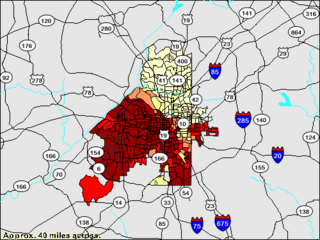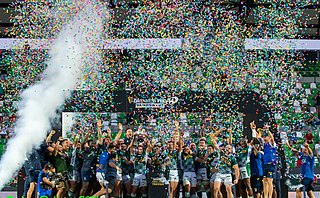
A rainbow flag is a multicolored flag consisting of the colors of the rainbow. The designs differ, but many of the colors are based on the seven spectral colors of the visible light spectrum.

The Universal Zulu Nation is an international hip hop awareness group formed by electro/hip hop artist Afrika Bambaataa.

George Noel Gittoes, is an Australian artist, film producer, director and writer. In 1970, he was a founder of the Yellow House Artist Collective in Sydney. After the Yellow House finished, he established himself in Bundeena and since then has produced a large and varied output of drawings, paintings, films, and writings. Gittoes’ work has consistently expressed his social, political and humanitarian concern at the effects of injustice and conflict. Until the mid-1980s, this work was chiefly done in Australia. But in 1986 he travelled to Nicaragua, and since then the focus of Gittoes’ work has been largely international. He has travelled to and worked in many regions of conflict, including the Philippines, Somalia, Cambodia, Rwanda, Bosnia, Bougainville, and South Africa. In recent years his work has especially centred on the Middle East, with repeated visits to Israel and Palestine, Iraq, and Afghanistan. In 2011, he established a new Yellow House, a multidisciplinary arts centre in Jalalabad, Afghanistan. Among many prizes, Gittoes has twice been awarded the Blake Prize for Religious Art.

Sun City is a luxury resort and casino, situated in the North West Province of South Africa. It is located between the Elands River and the Pilanesberg, built on the land of Bakubung Village about 140 km northwest of Johannesburg, near the city of Rustenburg. The complex borders the Pilanesberg National Park. It is made up of a number of themed sub-resorts with hotels on each, including the original Sun City Resort, The Cabanas, The Cascades and the Lost City.
The Nimbin Aquarius Festival was a counter-cultural arts and music festival organised by the Australian Union of Students. It was the fourth in a biannual series of festivals, first organised by the National Union of Australian University Students. The first Australian Universities Arts Festival was held in Sydney in 1967, and the second Australian Universities Arts Festival was held in Melbourne in 1969. The third added "Aquarius" to its name and was held in Canberra in 1971. The fourth and last was held in Nimbin, New South Wales in 1973.

District Six is a former inner-city residential area in Cape Town, South Africa. In 1966, the apartheid government announced that the area would be razed and rebuilt as a "whites only" neighbourhood under the Group Areas Act. Over the course of a decade, over 60,000 of its inhabitants were forcibly removed and in 1970 the area was renamed Zonnebloem, a name that makes reference to an 18th century colonial farm. At the time of the proclamation, 56% of the district’s property was White-owned, 26% Coloured-owned and 18% Indian-owned. Most of the residents were Cape Coloureds and they were resettled in the Cape Flats. The vision of a new white neighbourhood was not realised and the land has mostly remained barren and unoccupied. The original area of District Six is now partly divided between the suburbs of Walmer Estate, Zonnebloem, and Lower Vrede, while the rest is generally undeveloped land.

Ntozake Shange was an American playwright and poet. As a Black feminist, she addressed issues relating to race and Black power in much of her work. She is best known for her Obie Award–winning play, for colored girls who have considered suicide / when the rainbow is enuf (1975). She also penned novels including Sassafrass, Cypress & Indigo (1982), Liliane (1994), and Betsey Brown (1985), about an African-American girl run away from home.

"Rainbow nation" is a term coined by Archbishop Desmond Tutu to describe post-apartheid South Africa after South Africa's first democratic election in 1994.

Stomp is a percussion group, originating in Brighton, England, that uses the body and ordinary objects to create a physical theatre performance using rhythms, acrobatics and pantomime.

for colored girls who have considered suicide / when the rainbow is enuf is a 1976 work by Ntozake Shange. It consists of a series of poetic monologues to be accompanied by dance movements and music, a form which Shange coined the word choreopoem to describe. It tells the stories of seven women who have suffered oppression in a racist and sexist society.

The rainbow flag or pride flag is a symbol of LGBTQ pride and LGBTQ social movements. The colors reflect the diversity of the LGBTQ community and the spectrum of human sexuality and gender. Using a rainbow flag as a symbol of LGBTQ pride began in San Francisco, California, but eventually became common at LGBTQ rights events worldwide.
Burundi is a producer of columbium (niobium) and tantalum ore, tin ore, and tungsten ore, and some deposits of gold which are designated for export. Burundi has resources of copper, cobalt, nickel, feldspar, phosphate rock, quartzite, and rare reserves of uranium, and vanadium.
Live Nation Entertainment, Inc. is an American multinational entertainment company that was founded in 2010 following the merger of Live Nation and Ticketmaster. It promotes, operates and manages ticket sales for live entertainment internationally. It also owns and operates entertainment venues and manages the careers of music artists.
BigChampagne was a technology-driven media measurement company acquired by Live Nation Entertainment. The BigChampagne dashboard was used primarily by music industry professionals such as concert promoters, venues, radio programmers, managers, agents, and marketers to access information about the popularity of artists and songs across radio airplay, online streaming, social activity, sales, and live events. BigChampagne provided a number of services related to producing business intelligence (BI) and competitive intelligence (CI) for users of the dashboard via access to proprietary data and data management combined with web applications and other technologies.

The gay flag of South Africa is a pride flag that aims to reflect the freedom and diversity of South Africa and build pride in being an LGBTQ South African. It was registered as the flag of the LGBTQ Association of South Africa in 2012 and is not an official symbol of South Africa.

Black Atlantans form a major population group in the Atlanta metropolitan area, encompassing both those of African-American ancestry as well as those of recent Caribbean or African origin. Atlanta has long been known as a center of Black entrepreneurship, higher education, political activism and culture; a cradle of the Civil Rights Movement.
The Maloof Money Cup was an annual skateboarding competition for amateur and professional skateboarders founded by Joe and Gavin Maloof of the Maloof family. The events were held in four cities: Costa Mesa, California in 2008, 2009, 2010; New York City in 2010 and 2011; Washington, D.C. in 2011, and in Kimberley, South Africa in 2011 and 2012. The aim of the competition was to raise awareness of skateboarding and to encourage participation in skateboarding events and activities. Organizers also aim to contribute new skateboarding infrastructure and boost retail activity in those areas where events are held.
Athi-Patra Ruga is a South African artist who uses performance, photography, video, textiles, and printmaking to explore notions of utopia and dystopia, material and memory. His work explores the body in relation to sensuality, culture, and ideology, often creating cultural hybrids. Themes such as sexuality, Xhosa culture, and the place of queerness within post-apartheid South Africa also permeate his work.

Beverley Palesa Ditsie is a South African lesbian activist, artist, and filmmaker. Ditsie is one of the founders of the gay rights organization Gay and Lesbian Organization of Witwatersrand.

The Pro14 Rainbow Cup was a professional rugby union end-of-season cup competition played in 2021 that consisted of two separate tournaments: the Rainbow Cup for twelve European clubs and the Rainbow Cup SA for four South African clubs. The winners of each competition then played a final match to determine the overall winner. The tournament operated as a shortened 'Spring season' to allow for the integration of the four new South African teams into the United Rugby Championship ahead of the 2021–22 season.















